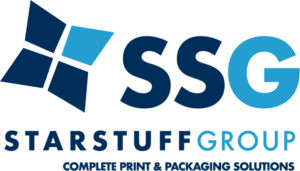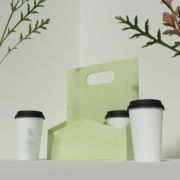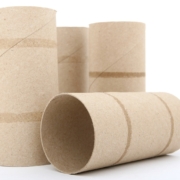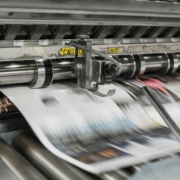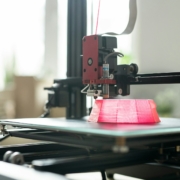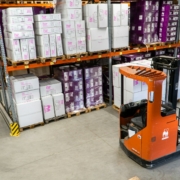Designing Coffee Packaging that Enhances Customer Experience
Coffee packaging plays a critical role in the overall customer experience. The way coffee is packaged can influence a customer’s perception and their decision to purchase. Eye-catching designs, useful features, and sustainable materials all contribute to making the packaging more appealing and functional. With the right packaging, brands can attract more customers and build loyalty. This blog will explore how to create coffee packaging that enhances the customer experience through thoughtful design, sustainability, and strong branding.
Importance of Coffee Packaging for Customer Experience
Coffee packaging is more than just a container. It is the first interaction customers have with your product. Attractive and functional packaging can make customers feel excited about their purchases. Eye-catching designs can draw customers in, while useful features can make their coffee experience more enjoyable.
Key Reasons Why Packaging Matters
1. First Impressions: The packaging is the first thing customers see, so it needs to grab their attention and make a good impression.
2. Freshness and Protection: Proper packaging keeps coffee fresh by protecting it from air, moisture, and light.
3. Convenience: Packaging should be easy to open, close, and store. Features like resealable bags or easy-pour spouts make a difference.
Customer-friendly packaging goes beyond just functionality. It tells a story about the brand and what it stands for. When packaging reflects a brand’s commitment to quality and sustainability, it builds trust and loyalty among customers.
Key Elements in Coffee Packaging Design
Designing coffee packaging involves several key elements that impact the customer experience. Each element should be thoughtfully considered to ensure the packaging meets customer needs and stands out on the shelf.
Good packaging design also involves practical elements. Features like one-way valves help release gas and keep coffee fresh while preventing air from getting in. Resealable zippers allow customers to keep their coffee fresh for longer. These small details can have a big impact on the customer experience.
Also, think about the packaging shape and size. It should fit easily on store shelves and in customers’ kitchen cupboards. Unique shapes can catch the eye, but they shouldn’t compromise functionality.
By focusing on these design elements, brands can create coffee packaging that is not only visually appealing but also highly functional. Such packaging enhances the customer experience, encouraging repeat purchases and building brand loyalty.
Sustainable and Functional Packaging Options
Sustainability is a major concern for many customers today. Coffee packaging that is both sustainable and functional can greatly enhance the customer experience. Using eco-friendly materials shows a commitment to the environment, which can attract eco-conscious consumers.
Sustainable Packaging Choices
1. Biodegradable Materials: Use materials that break down naturally and reduce landfill waste.
2. Recyclable Packaging: Ensure all parts of the packaging can be recycled easily.
3. Reusable Elements: Design packaging that customers can repurpose, like jars or tins that can be used for storage.
Functional packaging is just as important as sustainability. Customers want packaging that is easy to use and keeps their coffee fresh. Features like resealable zippers, one-way valves, and easy-pour spouts make a big difference in convenience and product quality.
Functional Features to Include
1. Resealable Zippers: These keep the coffee fresh and make it easy to open and close the package.
2. One-Way Valves: These release excess gas while preventing air from getting in, preserving freshness.
3. Easy-Pour Spouts: Make it easier to pour the coffee without spilling.
Combining sustainability with functionality can provide a great user experience, making customers more likely to return. It also helps build a positive reputation for the brand, showing that you care about both the planet and your customers.
Enhancing Brand Identity through Packaging
Coffee packaging is also a powerful tool for enhancing your brand identity. Well-designed packaging can communicate your brand values and make your product stand out. It’s not just about aesthetics; the packaging should tell a story and connect with the customer on an emotional level.
Ways to Reflect Brand Identity
1. Unique Designs: Use distinctive designs and colours that reflect your brand’s personality.
2. Brand Messaging: Include taglines, mission statements, or stories that convey your brand’s values and vision.
3. Consistent Branding: Make sure your packaging aligns with other marketing materials for a unified brand image.
Effective packaging design also focuses on the customer experience. Practical elements like clear labelling, easy-to-read fonts, and engaging graphics can enhance usability while promoting your brand. Packaging that is both informative and visually appealing leaves a lasting impression.
Tips for Strong Branding
1. Clear Labelling: Ensure all necessary information is easy to find and read.
2. Engaging Graphics: Use images and graphics that appeal to your target audience.
3. Personal Touches: Add personalised elements like thank-you notes or customer tips.
Paying attention to these details strengthens your brand and increases customer loyalty. When customers feel a connection to your brand, they are more likely to choose your products over competitors.
Conclusion
Designing coffee packaging that enhances customer experience involves a thoughtful blend of functionality, sustainability, and strong branding. The right packaging can attract customers, keep coffee fresh, and reflect your brand’s values. Sustainable and functional options show your commitment to the environment and customer satisfaction. Branding elements like unique designs and clear messaging help create a strong connection with your audience.
Ready to elevate your coffee packaging? Contact us at Star Stuff Group to explore our innovative packaging solutions designed to meet your brand’s needs.
